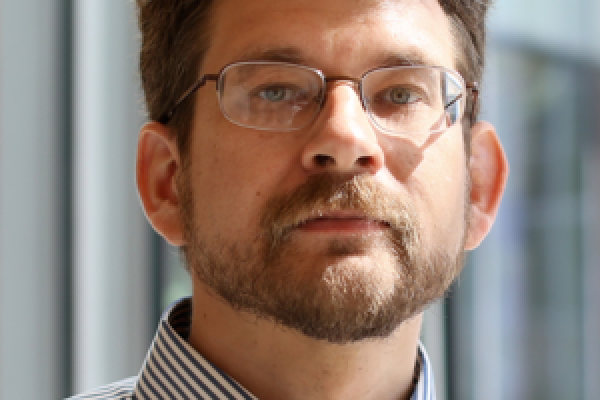A New Look at How Stars Are Born

Astronomy Assistant Professor Adam Leroy and his students will get the best look yet at how stars are born in galaxies’ “stellar nurseries,” thanks to a new, five-year, $582,635 National Science Foundation Faculty Early Career Development (CAREER) Award. The award not only provides five years of financial support to jump-start the careers of the nation’s exceptional junior faculty, but the grant’s funding for outreach also helps grow new generations of scientists, many from underrepresented minorities.
The grant will enable Leroy and his graduate students to use a set of new radio telescopes to study how stars are born in galaxies.
"These new telescopes will allow us to take pictures of interstellar clouds of gas and dust that are about to give birth to new stars in the nearest galaxies," said Leroy. "By carefully analyzing these new data, we will be able to tell how these clouds, or 'stellar nurseries,' form and see what makes a galaxy good or bad at forming stars. In the process, we'll make very strong tests of many currently debated hypotheses and, we hope, move the field of star-formation forward significantly."
Leroy is equally excited about getting started on two outreach ventures this summer. He will work with the Ohio Supercomputing Center's Summer Institute, a two-week summer program that engages Ohio high school students, provides a hands-on research experience and encourages them to pursue STEM fields at the college level.
He will also engage undergraduate researchers, recruited through the American Association for the Advancement of Science's (AAAS) Entry Point! program, which helps students with disabilities, an underserved population in STEM fields, find summer research opportunities, giving them experience that will make them more competitive in graduate-school STEM fields.
Leroy, who came to Ohio State in 2015, has been working with several graduate students and looks forward to working with undergraduate researchers in the spring semester.
“Ohio State is a great place to do research, to train future scientists and to teach non-scientists about science. I was particularly drawn to the astronomy department — and the closely associated Center for Cosmology and AstroParticle Physics — a world-class program, with outstanding graduate students, and a supportive, collaborative atmosphere that's really unique in the U.S.”
@OSUAstro students will get a new look at new stars thanks to telescopes provided by a @NSF grant #space #ASCDaily
